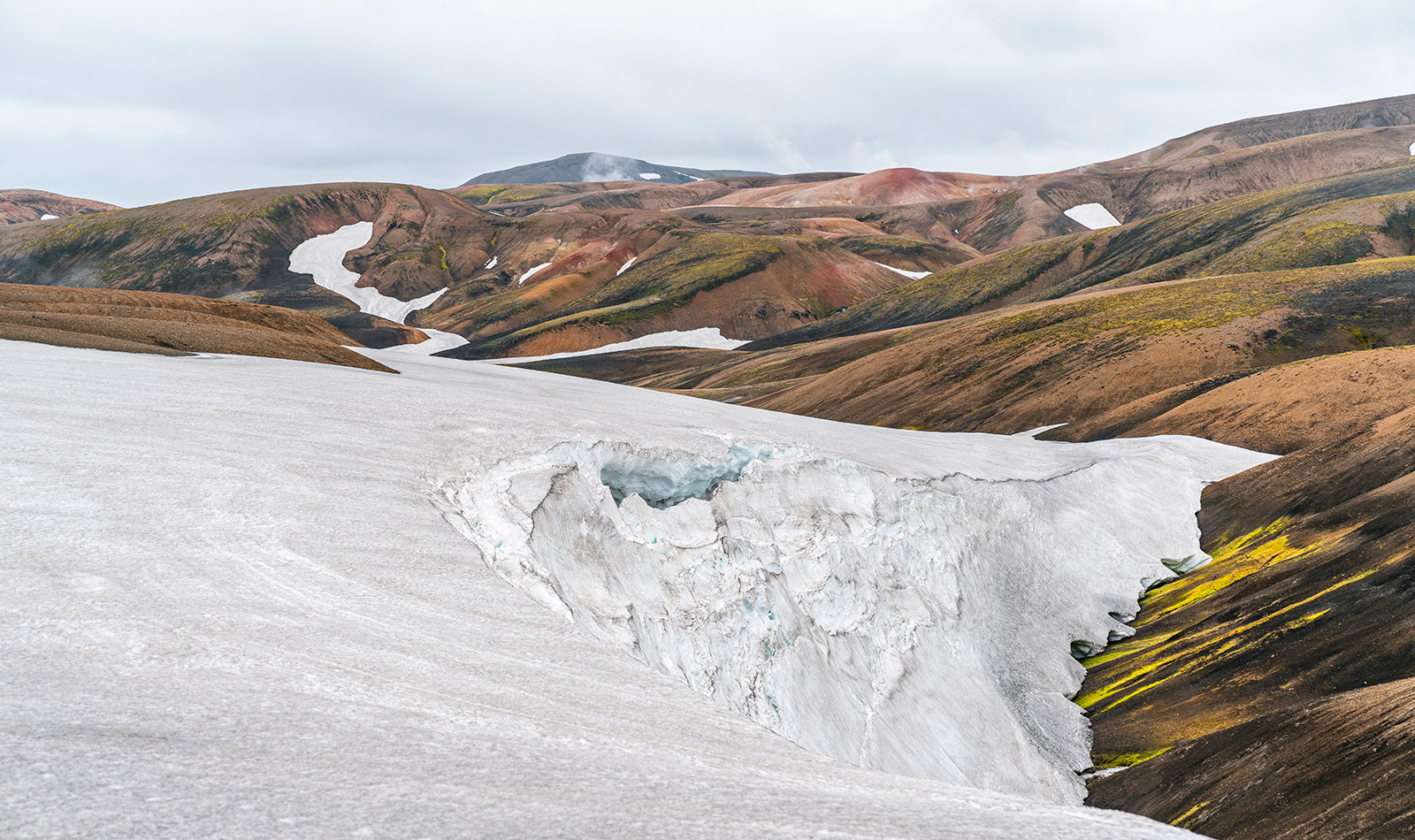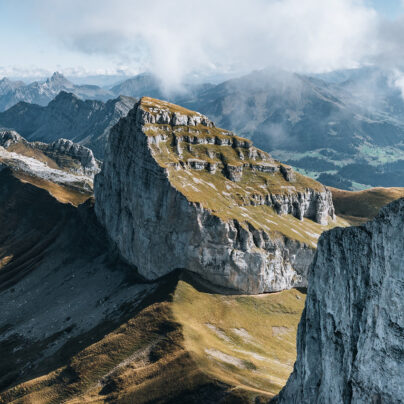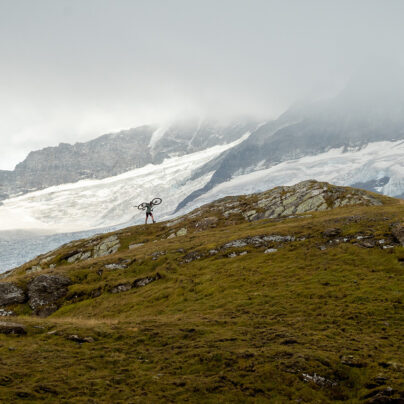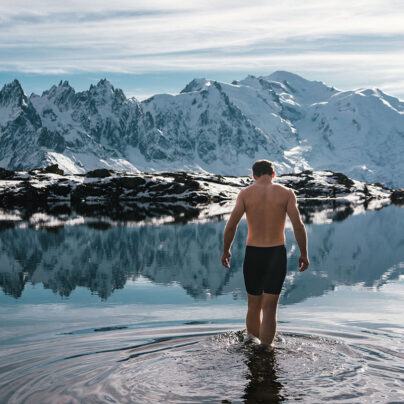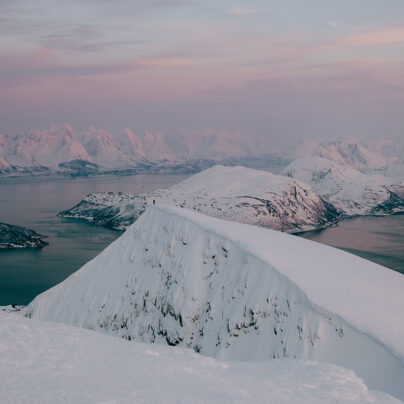North of Boundaries
A fourteen-day thru-hike across the Icelandic Highlands
Written by Hailey Playfair
Film and Photography by Ryan Richardson & Hailey Playfair
The ice-cold water sobers me and sends a gut-wrenching jolt of pain through my body. ‘Keep your eyes on the horizon,’ Ryan shouts over the bellow of the river. I take comfort in his voice and don’t second-guess his instruction. The rapids are getting stronger.
Inhale, exhale. Inhale, exhale.
I tell myself this over and over. I’m frantically searching for the widest part of the river I must cross. The worst thing to do is panic, but I can’t help but worry about misstepping and getting swept away by the rapids. There’s no room for error; one mistake and the whole expedition is over. Thick storm clouds begin to dominate the sky, unleashing hail and rain on us. We’re caught by the erratic behaviour of Europe’s largest desert, the Highlands of Iceland. The weather here is so unpredictable that we have just experienced all four seasons within an hour. My trekking partner, Ryan, and I unclip our heavy packs and get ready to take the plunge into a raging river vein produced by the monstrous glacier, Tungnafellsjökull. The rain falls harder, in knife-like sheets, and the water moves faster. I feel helpless, but our only option is to get across the river or risk freezing.
The Central Highlands are not a place that many desire to experience. The capricious weather and sparse vegetation make the landscape feel like some forbidden fortress. The Highlands are only accessible for two months in the year and have no infrastructure. Although the land is ferocious, the volcanic desert, mountain peaks, and ancient glaciers have become an area of desire for European hydro companies. If a national park isn’t established soon, the 40,000 square kilometres that make up the Highlands of Iceland will be exploited. Ryan and I are venturing into the desert wasteland to help protect one of Earth’s few remaining wilderness areas.
The ice-cold water sobers me and sends a gut-wrenching jolt of pain through my body. ‘Keep your eyes on the horizon,’ Ryan shouts over the bellow of the river. I take comfort in his voice and don’t second-guess his instruction. The rapids are getting stronger. The water pressure is immense; it wants to take me with it. What the hell have I gotten myself into? I’m desperate to be out of the river and far away from this moment. It’s impossible to avoid the sharp river debris on my exposed feet, but I ignore the pain and fight to keep my stance. ‘Stay strong, Hailey,’ I murmur to myself. In my mind I hear the voice of the warden we met the day before, suggesting that this is how hikers go missing. I ignore her and see Ryan’s hand reaching for mine. I use every ounce of my strength and feel my heart sink as I grip my partner’s hand. I’m out.

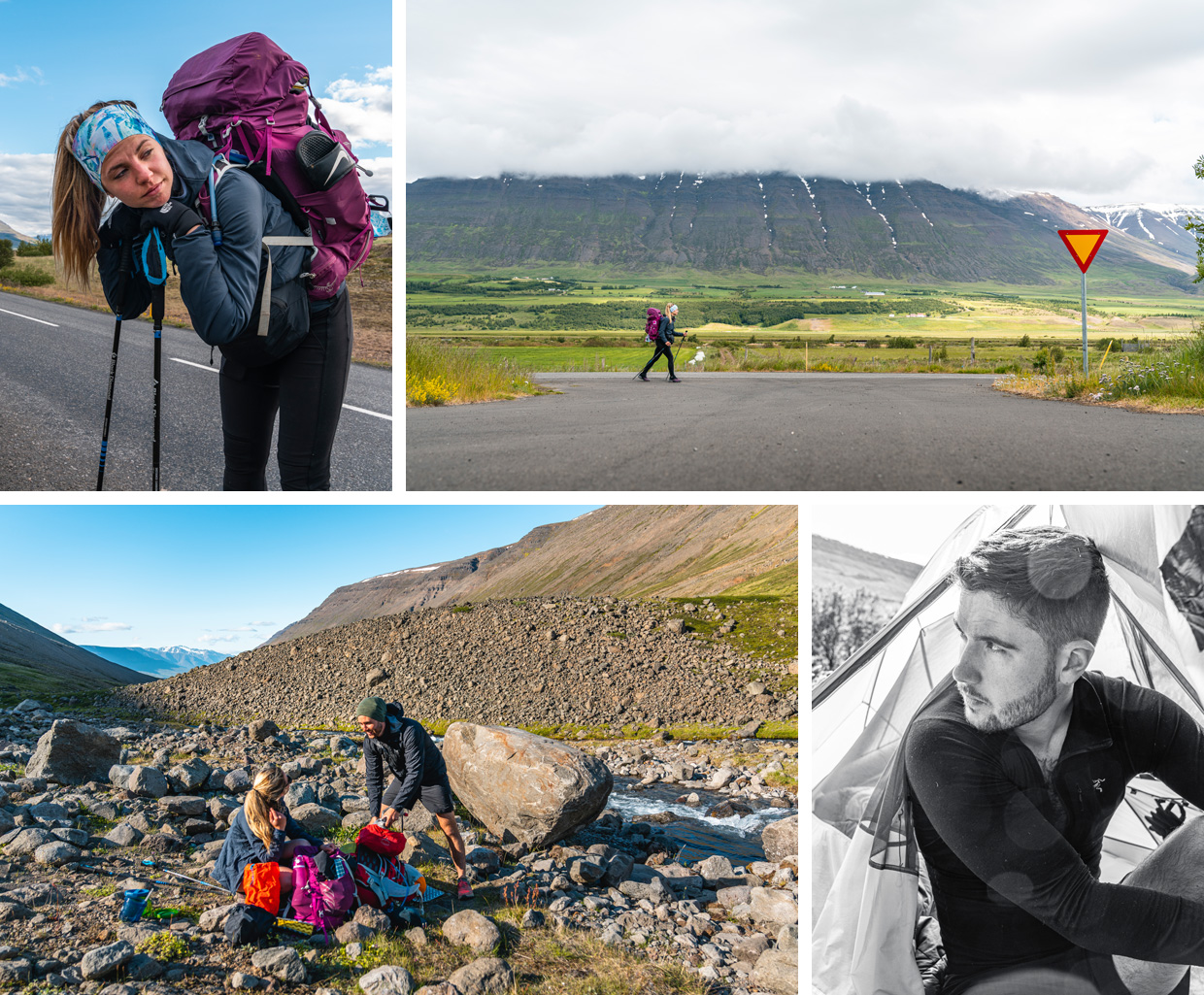
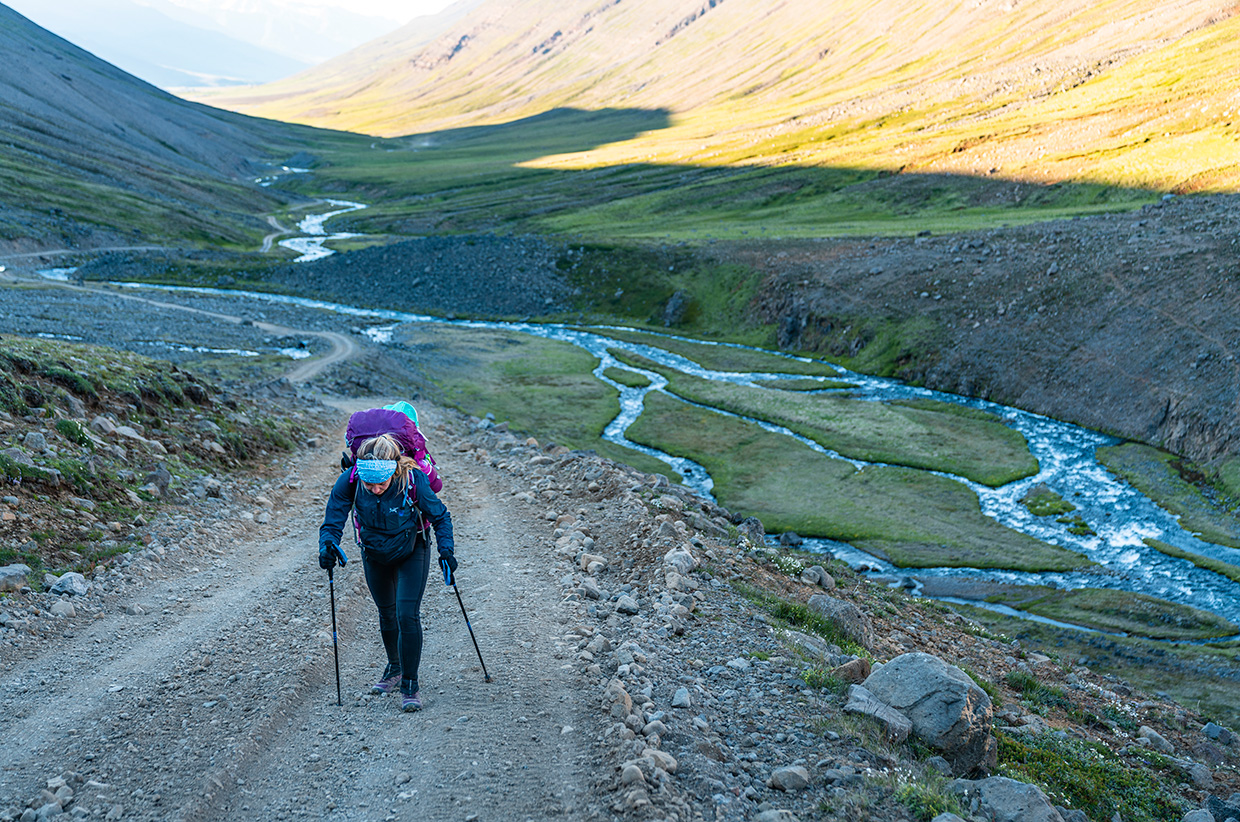
The exposure of my unprotected legs to the ruthless North Atlantic wind is gut wrenching. The air is so cold that with each gust it feels as if a layer of skin is being torn away. We don’t have time to wait – heavy rain can cause the river veins to expand so much that they will take out everything in their path. We still have 5km and another river crossing to go before we can reach the safety of Iceland’s most remote mountain hut, Nyidalur.
Ryan and I both gasp for air as we run along the wet, muddy gravel trail. Within half an hour, we see a faint outline and begin approaching what looks like a cabin. Relief. We’ll be warm, maybe even dry soon. The next river is much smaller so we sprint across it with our trail shoes on. Icicles form instantly on our feet but we’re safe now. Inside the basic Nyidalur mountain hut, the clock reads 3.00am. I boil water for our first meal of the day; Ryan elevates his legs on a small chair, and his facial expression tells me he’s overwhelmed by the painful sensation of feeling returning to his feet. We’ve accomplished 15 hours and 52km in one push – now we rest, but not for long. There are still hundreds of kilometres to go and this is the last time we’ll be in contact with other humans until we reach Landmannalaugar.
I don’t consider myself an ‘athlete’; just someone who is up for a challenge and wants to utilise the abilities I have to help make a difference. Having started at the coast in Akureyri, the river experience was our first true taste of interior Iceland’s unapologetic nature. It was sobering and a not-so-gentle reminder that nature controls us and not the other way around. I feel unwelcome in the Central Highlands. Maybe it’s the inhospitable lunar landscape or perhaps the unpredictable arctic storms. It feels as though I’ve stumbled into another dimension that is off limits to humans. Despite my feelings, we carry on through the barren desert without another soul in sight. Supplies are limited and everything we need to survive the next 10 days we carry on our backs. We only have ourselves and each other to rely on. We will get to Iceland’s southern coast by walking at least a marathon each day. Day in and day out, we will capture the experience – the desolate landscape, the uninterrupted solitude, and the untouched wilderness.
Ryan and I both gasp for air as we run along the wet, muddy gravel trail. Within half an hour, we see a faint outline and begin approaching what looks like a cabin. Relief. We’ll be warm, maybe even dry soon.

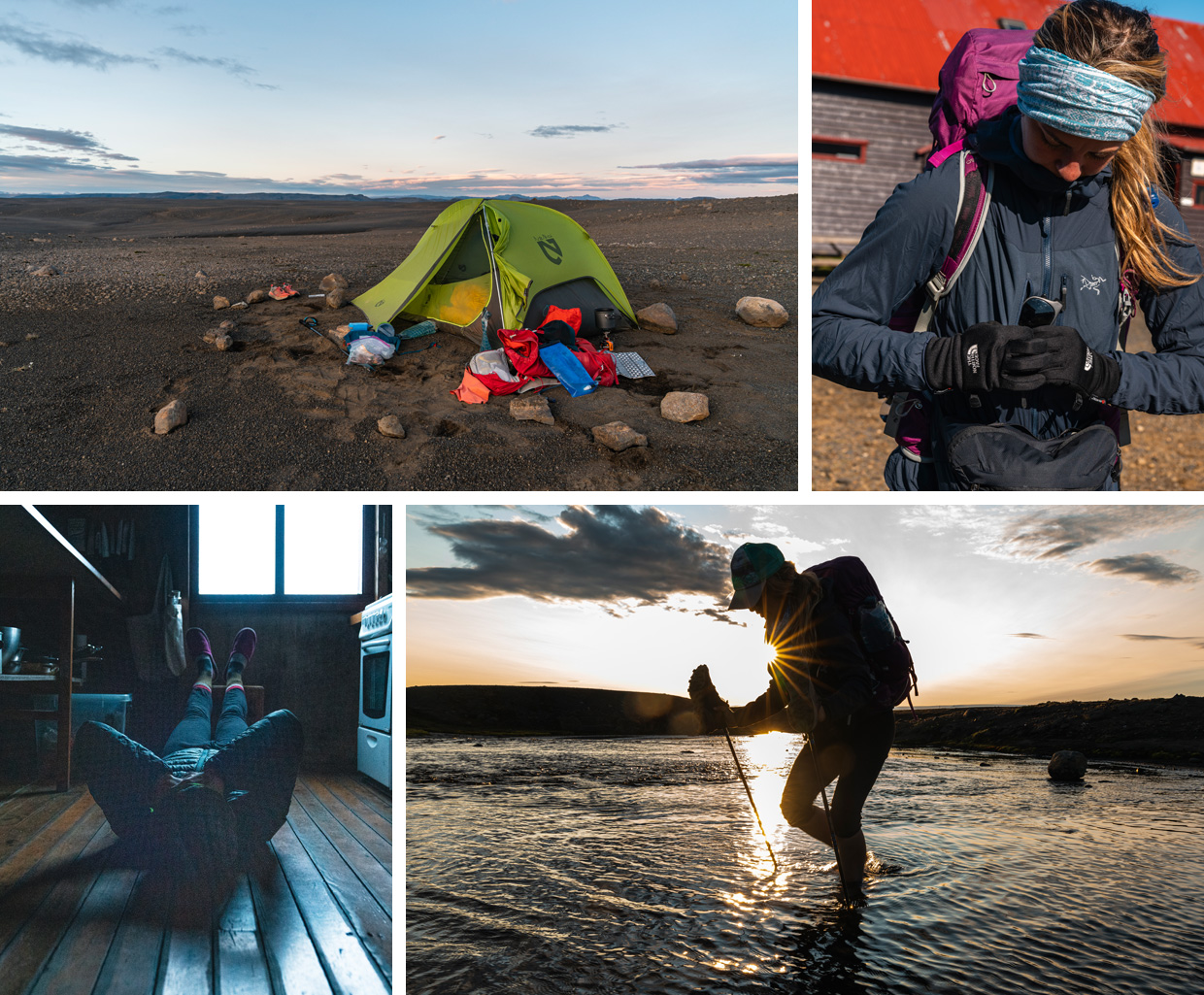
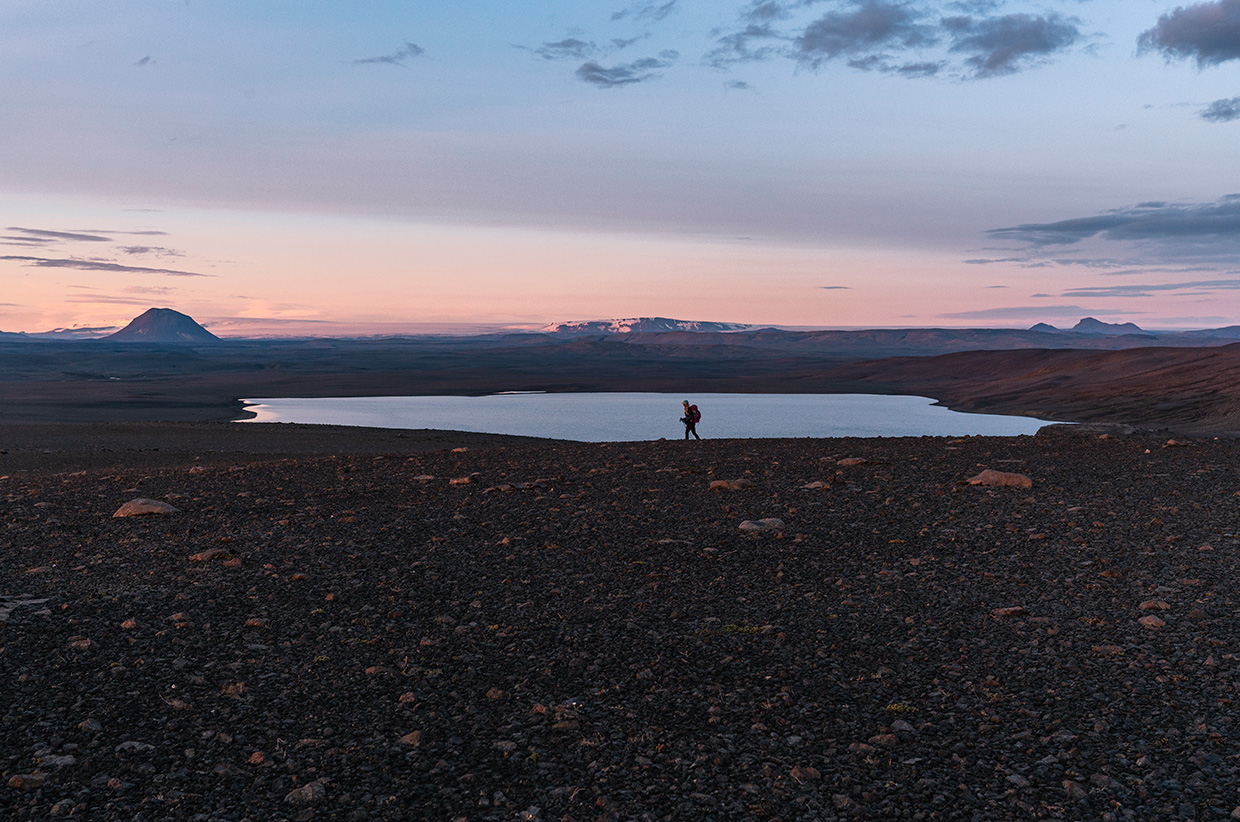
Time no longer exists. Our days are solely measured in how many kilometres we’ve completed. The golden-hour light is glowing on Ryan’s skin so I know the day is coming to an end. We are struggling to climb up Panorama Ridge, but the vibrant colours spark a new sense of hope.
The gusting wind is so loud against my Gore-Tex hood that there’s no point trying to make conversation with Ryan. I feel alone in my head. We walk beside Iceland’s third-largest glacier, Hofsjökull, for two days straight without seeing anything else. I frequently find myself thinking of the geothermal oasis, Landmannalaugar, where we will have our first rest day. Thoughts of bathing in the natural hot springs surrounded by colourful rhyolite hills fill my mind; I just want to get there. Every step reminds me how far away I am from that moment. Feet to gravel, over and over again, I feel my mind slip into the dark space that many explorers experience mid-adventure. Self-doubt surfaces. I’m reminded of how out of my mind I am and tell myself that only real athletes should ever attempt something like this. This negativity continues for hours.
It’s day six, and the Highlands continuously test us. Around 30km into our 50km day, my body is unforgiving of the stress I’m putting it through. We walk, stop and shoot a film sequence. We repeat the same sequence three or four times until we are satisfied with the shot. It’s one thing to have to walk, it’s another to have to walk and film ourselves.
Time no longer exists. Our days are solely measured in how many kilometres we’ve completed. The golden-hour light is glowing on Ryan’s skin so I know the day is coming to an end. We are struggling to climb up Panorama Ridge, but the vibrant colours spark a new sense of hope. I smile as I absorb what unfolds in front of me. At the top of the ridge, I observe the beautiful Hofsjökull glacier, its snow-capped peaks shimmering with coral and magenta hues. To the east is a volcano with a turquoise lake beside it that has pooled from the river veins of Vatnajökull glacier. My body’s response to these stimuli is slow, but my heart is beating fast from the excitement. A crescent moon rises overhead and I’m trying to comprehend how we are the only people in the world experiencing this moment. I couldn’t have dreamed of an adventure like this. It feels as though we have been transported to another universe and are the first people to discover a new land. I feel a deep connection to this misunderstood landscape. Embracing the surrounding peace and beauty, I trade previous thoughts of despondency and fear for new-found hope and enlightenment. This magical moment is the fuel I need to complete the story and share how delicate the Highlands truly are. We make camp under the midnight sun and fall asleep to the sound of a light breeze rustling our tent. Tomorrow we will be in Landmannalaugar.

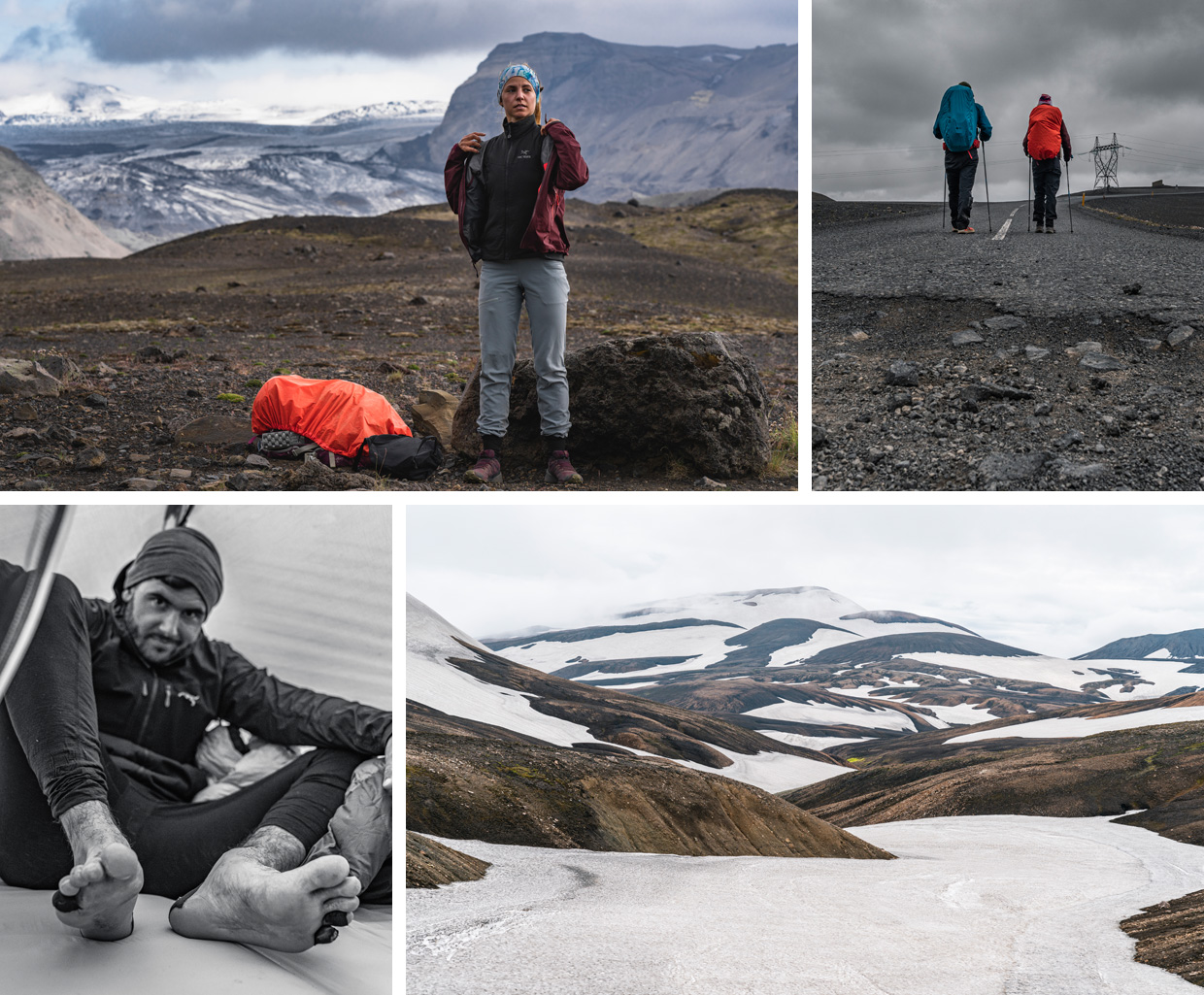
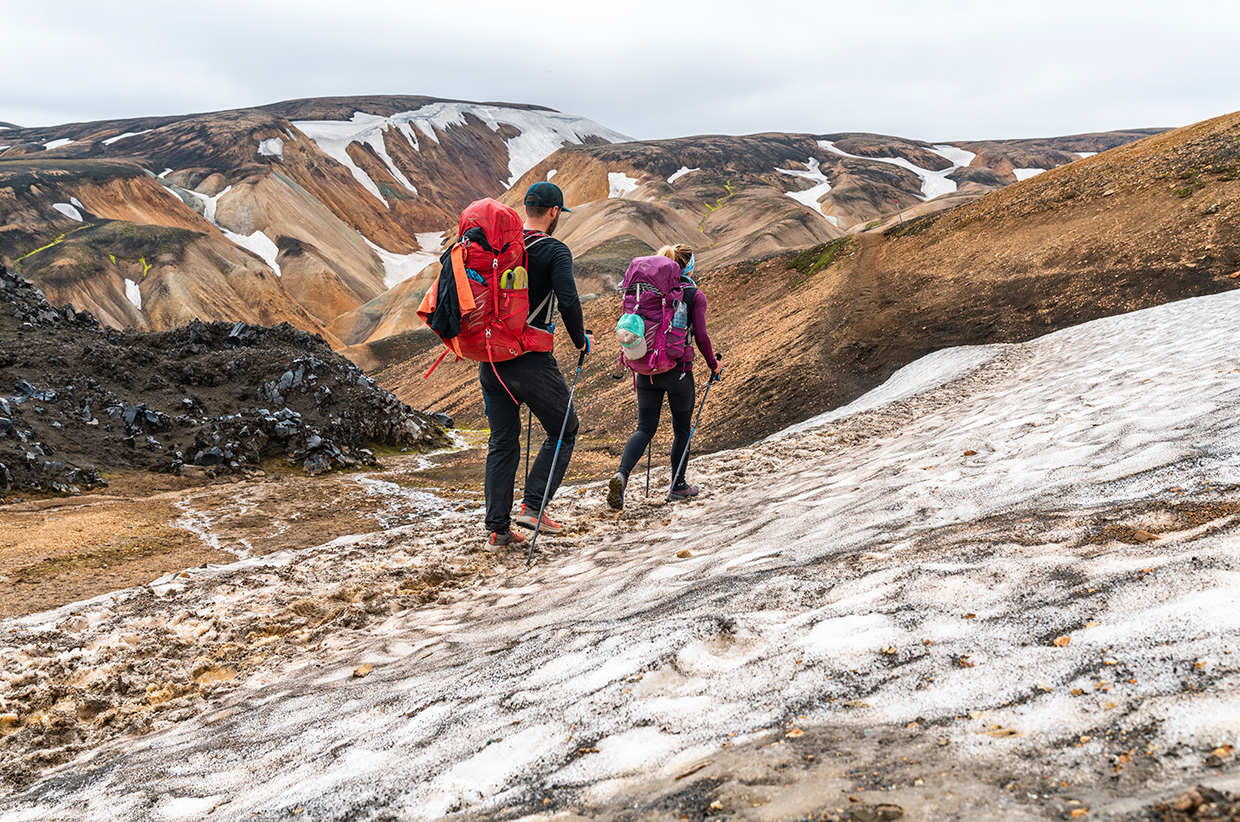
Day seven is a rollercoaster of emotions and suffering. On the one hand, we are excited to be so close to Landmannalaugar so we can rest and replenish our supplies. On the other, the pain is so unbearable that Ryan can hardly walk. Passing crystal-coloured lakes and rolling mountain ridges, I’m reassured that the pain is going to be worth the reward in the end. However, our wilderness fairy tale is quickly disrupted by the first sign of human impact on the Highlands. Our gravel path meets asphalt; hydropylons and dams scar the timeless landscape. I’m so angry I could cry. My rage stems from knowing that defacement like this is the fate of the rest of the Highlands. Such exploitation is the reason we have to keep our heads up and fight through the pain.
The smell hits me like a truck long before we catch sight of its cause. We make it to Landmannalaugar, but hardly in one piece. Ryan unravels the tape on his feet that he has been wearing for the last five days. The blisters are so big that I can’t distinguish between them and his actual toes. Horrified, we look at each other in silence. ‘I think it’s over,’ Ryan says to me in disbelief. Plans to book buses and hotels make up the chatter in our tent. I can’t bear the thought of failure. I collapse my face into my hands and let out a defeated groan. An elite ultrarunner friend of mine always says, ‘If you’re going to quit, do it in the morning.’ I’m inspired by her words and suggest to Ryan that we think on our decision a little longer before throwing in the towel.
Ryan’s blisters are drained by the on-site Search and Rescue team and they suggest that he stay off his feet for at least three days. There are certainly worse places to spend three days, but being in Landmannalaugar for that long was not a part of plan. Crammed in our tiny two-person tent, we wait.
Three days later, we begin our ascent to Skógar and the end of our expedition. Our path follows the famous Laugavegur Trail, which we completed in 2017. Surrounded by energetic hikers and familiar scenery, the Laugavegur Trail breathes a new life into us. Ending our trek with the Laugavegur Trail is the medicine we need to make it to the coast. Dipping my hands in the Atlantic Ocean, I feel reborn. I should feel some accomplishment at completing such a massive objective, but all I feel is fear. Being a passenger voyaging through the Highlands has helped me to develop a great appreciation for the land and its history. I think back to moments like Panorama Ridge, and I’m saddened by the Highlands’ reality. Experiencing what is at stake compels me to do everything in my power to help prevent the catastrophe. However, if protection isn’t put in place soon, one of Europe’s last true wilderness areas will be lost forever.
This story first featured in Sidetracked Magazine Volume 17
Photography and film by Ryan Richardson & Hailey Playfair
Instagram: @haileyplayfair
Instagram: @ridgeriderryan
Instagram: @/lifeoutsidestudio
Website: lifeoutsidestudio.com
Read more about the expedition here.
To learn more about how you can protect Iceland’s Highlands, please visit halendid.is.



